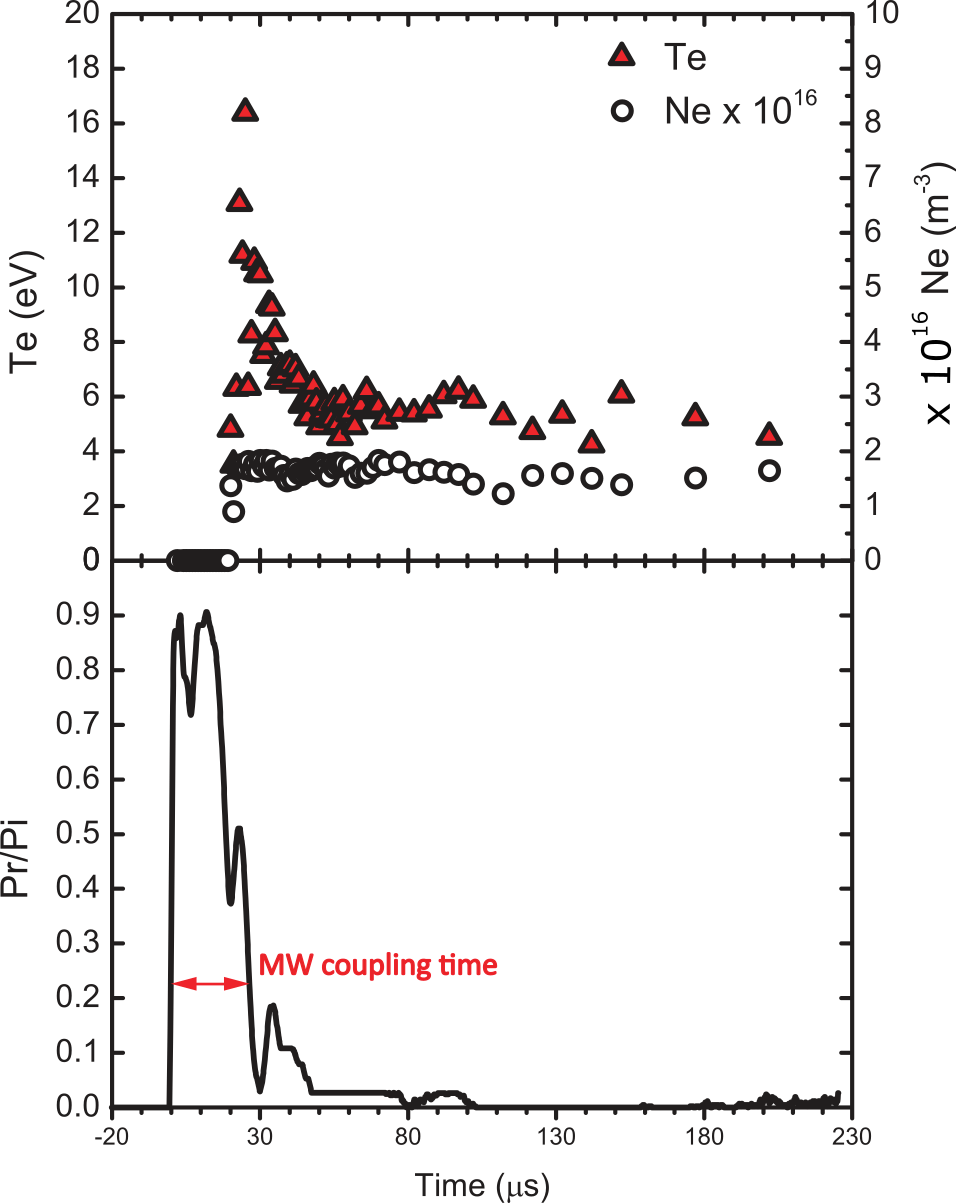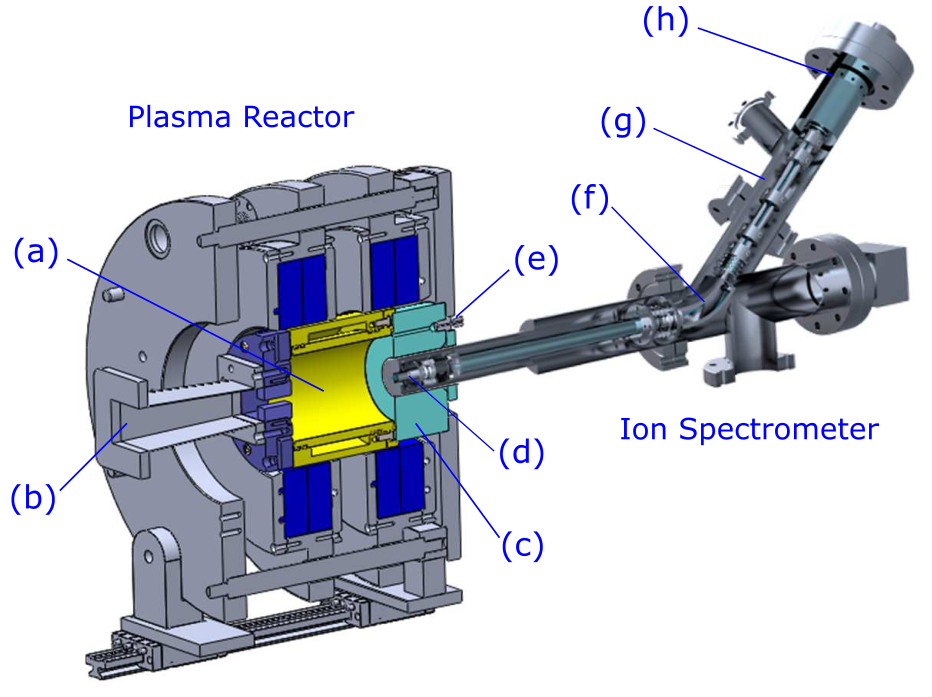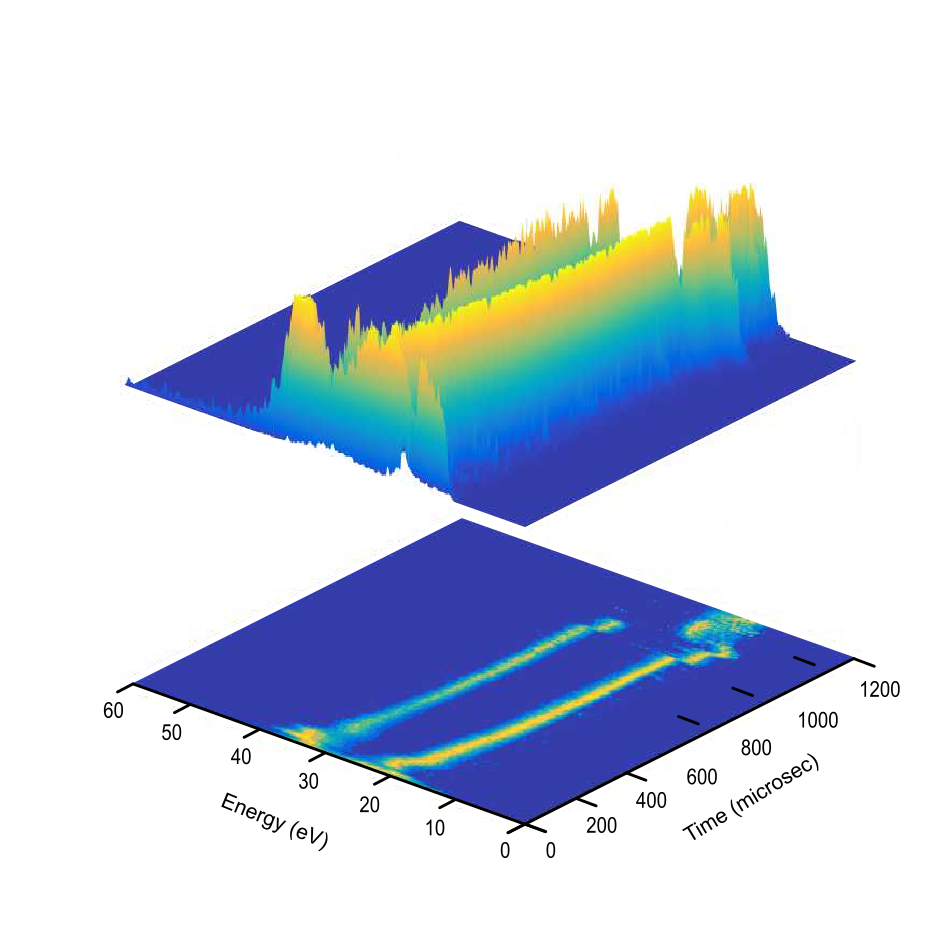A review of the last ten years of advances in temporal resolved plasma diagnostics for pulsed operated 2.45 GHz microwave-driven hydrogen discharges is presented. Special attention has been paid to the study of breakdown and decay processes where Hiden systems have been used showing relevant results.
Density and temperature measurements: Langmuir probe made of tungsten wire 6mmlong and 0.5 mm diameter is placed in the middle of the plasma chamber. The Langmuir probe driver consists of an ESPion system from Hiden Analytical Ltd. Jitter is carefully checked obtaining a value lower than 200 ns in order to ensure measurement stability. By modifying the Langmuir probe driver trigger delay, the time evolution of electron temperature and density is obtained and a pulse in temperature is clearly detected as in shown in Fig. 1

Fig 1: Upper window: plasma temperature and density evolution during the breakdown. Lower window: the ratio of reflected power and incoming power Pr/Pi, showing the coupling time definition as the width of the pulse drop.
Ion mass spectroscopy measurements: Ion Energy Distribution Functions (IEDFs) of ion species involved in plasma are always of interest especially when several populations are dynamically coexisting as in the case of a 2.45 GHz hydrogen discharge. Figure 2 shows the experimental setup where a HIDEN plasma ion mass spectrometer model EQP is attached to our ECR plasma experiment. In this example, the time evolution of H+, H2+ and H3+ IEDFs during the entire pulse duration is obtained. The results show interesting behaviors during the breakdown and decay that could be associated with preglow and afterglow phenomena as is shown in Figure 3. A bimodal IEDF is observed showing connections with collective plasma behaviors.

Fig. 2: A cross-sectional view of the plasma reactor with the ion mass spectrometer attached: (a) plasma chamber, (b) microwave coupler, (c) microwave waveguide adapter, (d) coil pancakes, (e) quartz window placed in front of the camera, (f) vacuum tee, (g) optical window with shielding grids, and (h) the optical sight axis.

Fig. 3: Normalized experimental data corresponding to the temporal evolution of the IEDF for the H+ ion. The lower image is a projection of the surface on the energy–time plane.
 Project summary by: O. D. Cortázar, Institute for Energy Research (INEI), University of Castilla-La Mancha, c/Moledores s/n, 13071 Ciudad Real, Spain
Project summary by: O. D. Cortázar, Institute for Energy Research (INEI), University of Castilla-La Mancha, c/Moledores s/n, 13071 Ciudad Real, Spain
Paper Reference: “Time resolved plasma diagnostics for pulsed 2.45 GHz hydrogen discharges” Review of Scientific Instruments (2021) 92, 113301 DOI: doi.org/10.1063/5.0065676
Reference: AP-ESPion-202115
To find out more about these products visit the EQP & ESPion product pages or if you would like to contact us directly please Send us a Message.

